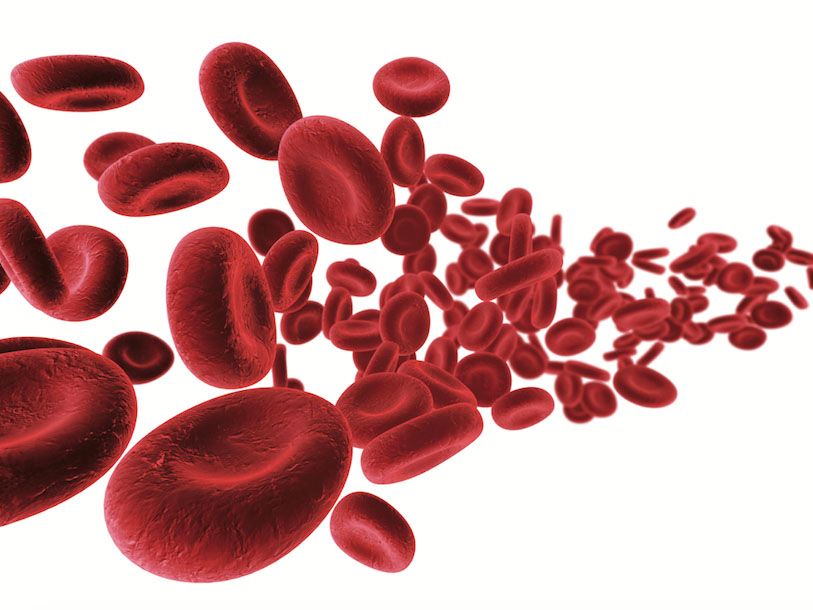Six-Gene Signature Predicts Poor PFS in MCL
Expression of genes from the B-cell receptor pathway predicted shorter progression-free survival and overall survival in patients with mantle cell lymphoma, according to results from an examination of a subsection of patients in the ongoing Fondazione Italiana Linfomi MCL-0208 clinical trial.

Expression of genes from the B-cell receptor pathway predicted shorter progression-free survival (PFS) and overall survival (OS) in patients with mantle cell lymphoma (MCL), according to results from an examination of a subsection of patients in the ongoing Fondazione Italiana Linfomi MCL-0208 clinical trial.
Fondazione Italiana Linfomi MCL-0208 (n = 300) is a prospective, multicenter, phase III randomized trial comparing lenalidomide (Revlimid) maintenance therapy with observation in adult patients with MCL who went into complete or partial remission following first-line R-CHOP, high-dose cytarabine, and autologous stem cell transplantation.
The 83-patient cohort included in this analysis was identical to the overall patient population for median age, Ki-67 index, PFS intervals, and MCL-International Prognostic Index (MIPI) score.
The median patient age was 56 years (range, 28-65) and the cohort included 57 men. Median OS in the cohort was 34.7 months (range, 1.4-73.4) and median PFS was 31.3 months (range, 1.4-73.4).
By MIPI-c class, 46% of the patients were deemed to be low risk, 28% were low-to-intermediate risk, 13% were intermediate-to-high risk, and 7% had high-risk disease. The MIPI-c classification was not available in 5 patients.
Investigators analyzed 46 peripheral blood and 43 formalin-fixed paraffin-embedded lymph node samples of patients with MCL using gene expression profiling and quantitative real-time polymerase chain reaction (PCR). They then used quantitative real-time PCR values from 6 representative genesAKT3,BCL2,BTK,CD79B,PIK3CD, andSYKto categorize patients as either B-cell receptorlow (BCR-low) or B-cell receptor–high (BCR-high).
In an analysis of the 46 peripheral blood samples, investigators identified 23 as BCR-high and 23 as BCR-low. A shorter median PFS was observed in the patients classified as BCR-highcompared with those who were BCR-low (21.6 months vs not reached;P= .0375).
Patients in the BCR-high subgroup also had elevated levels of lactate dehydrogenase (416.6 ± 191.6 vs 292.2 ± 127.4;P= .023). This was the only significant difference found between the subgroups. Investigators found no association betweenIGHVgene status and BCR signature (P= .93). Associations with the BCR signature were also investigated in Ki-67 expression, white blood cell count, hemoglobin, lymphocytes, platelets, and neutrophil count.
Of the 43 lymph node samples, 81% demonstrated expression of all 6 genes, 23 of which were classified as BCR-low and 20 were categorized as BCR-high.
When investigators merged the peripheral blood and lymph node samples, 40 patients were classified as BCR-high and 43 were BCR-low. Median PFS was again shorter in the BCR-high subgroup (42.1 months vs not reached;P= .0074).
Investigators then combined the BCR groups with prognostic groups defined by Ki-67 score, a well-known predictor in MCL. The median PFS was shortest (20.5 months) for patients who were BCR-high and Ki-67high, defined as ≥30% of Ki-67 expressing cells. Median PFS was not reached for all other combinations of BCR and Ki-67 (P= .0014).
“Our data underscore the increasing importance of BCR-related genes in the pathogenesis and development of MCL, further underlined by the clinical significance of drugs specifically targeting genes belonging to this pathway,” corresponding author Riccardo Bomben, PhD, of the Clinical and Experimental Onco-Hematology Unit, Oncology Referral Center, Institute for Research and Health Care in Aviano, Italy, and colleagues wrote.
“In particular, therapeutic targeting of BTK can be rationally exploited in lymphoid malignancies that have been proved to be dependent on an antigen-dependent BCR-mediated active signaling,” they added.
Bomben et al wrote that the BCR signature could help to explain why some patients with MCL do not respond to ibrutinib (Imbruvica), though gene mutations in other pathways may also play a role.
When investigators performed Multivariable Cox regression analysis by MIPI combined with Ki-67 proliferation index (MIPI-c) and BCR status, they found that BCR-high status (3.48; 95% CI, 1.47-8.25;P= .005) and the high-risk MIPI-c category (4.17; 95% CI, 1.3-13.34;P= .016) were both independent predictors for PFS.
“Consistently, the BCR-high signature turned out to be an independent prognosticator along with the high-risk MIPI-c category for short PFS by multivariate analysis,” the investigators wrote.
Bomben et al suspected that the low rate of events and short follow-up time meant that BCR could not identify groups with different OS intervals. However, the combination of high Ki-67 score and a BCR-high signature identified the MCL subgroup with the shortest OS (46.7 months vs not reached;P= .029)
They added that the model appeared equally valid when samples were collected in the peripheral blood or the lymph nodes, and when the samples were frozen or formalin-fixed paraffin-embedded.
Reference:
Bomben R, Ferrero S, D’Agaro T, et al. A B-cell receptor-related gene signature predicts survival in mantle cell lymphoma: results from the Fondazione Italiana Linfomi MCL-0208 trial.Haematologica. 2018;103(5):849-856. doi: 10.3324/haematol.2017.184325.
“In this regard, an important feature of this model/assay is its applicability to both peripheral blood and lymph node formalin-fixed paraffin-embedded samples, having, therefore, the chance to combine results of quantitative real-time PCR with Ki-67 staining in all the cases,” the investigators wrote.
Examining the Non-Hodgkin Lymphoma Treatment Paradigm
July 15th 2022In season 3, episode 6 of Targeted Talks, Yazan Samhouri, MD, discusses the exciting new agents for the treatment of non-Hodgkin lymphoma, the clinical trials that support their use, and hopes for the future of treatment.
Listen